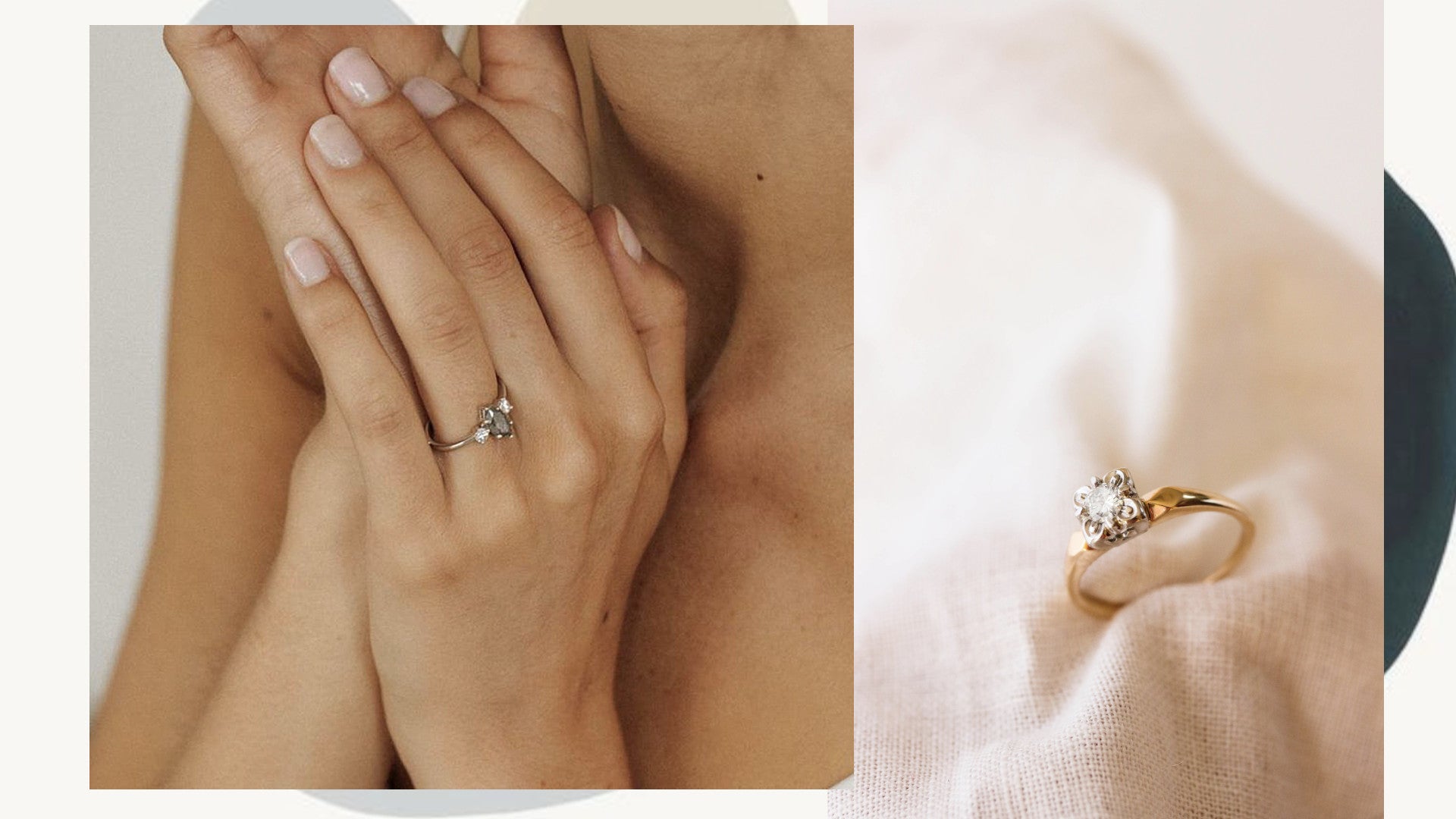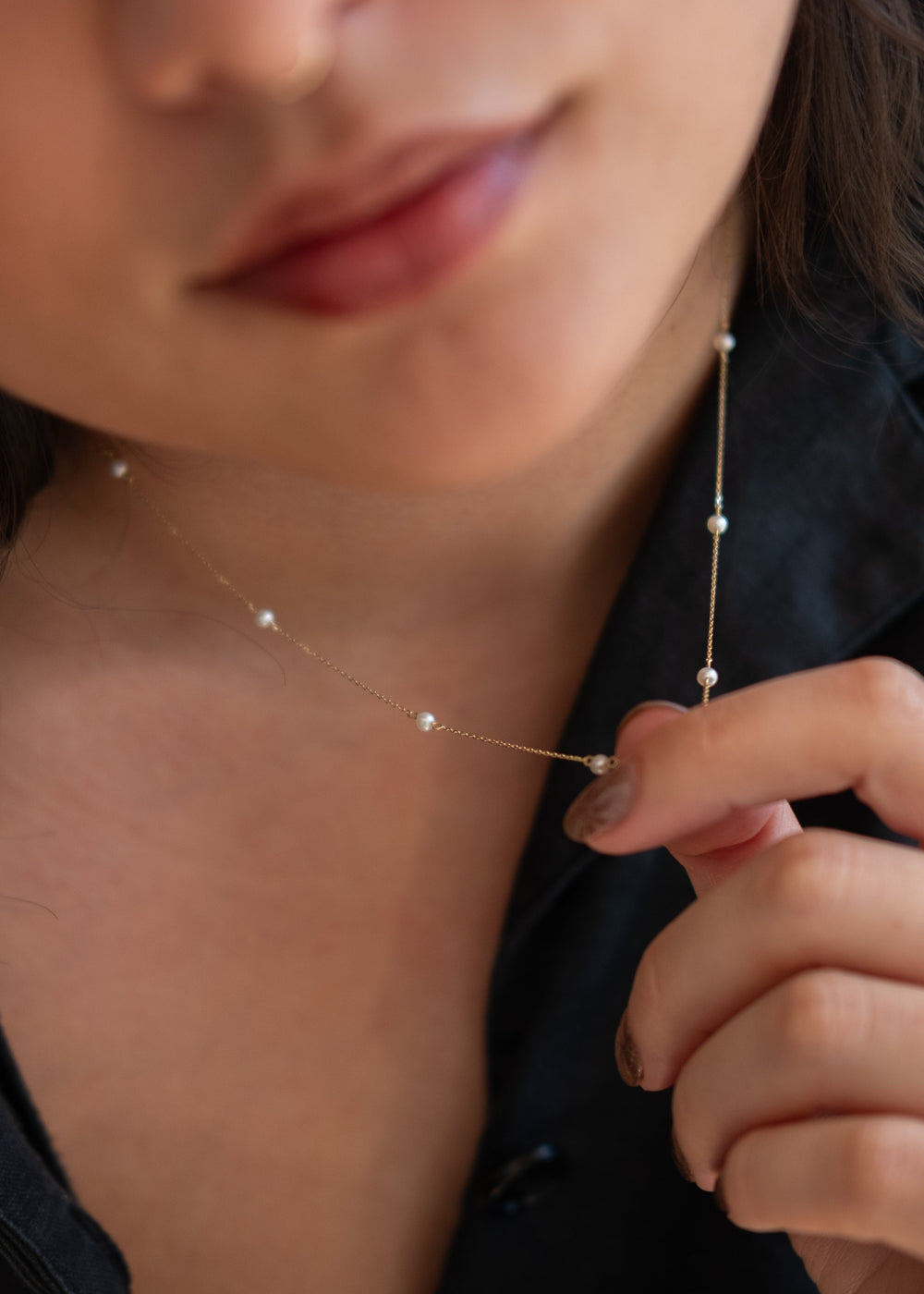You've probably heard the term "blood diamond," and even without a comprehensive knowledge of the history of diamond mining, you can probably imagine what the term infers.
You can probably also deduce that you do not want your diamond to fall into this category: one mired in violence, human rights violations, and environmental harm. It's always best to purchase conflict-free, ethical stones.
Here is all you need to know to get comfortable purchasing ethical stones.

Featuring our Joss Ring and one of our vintage rings.
A brief history of diamond mining
Diamonds are created when a volcanic eruption—a kimberlite eruption—forces Kimberlite, a substance which contains rough diamonds, up towards the surface of the earth in Kimberlite pipes. These pipes are essentially vertical cracks that channel the diamonds up, out of the Earth's crust, and toward the surface.
From these cracks, diamonds can be mined either through alluvial mining (which requires the diversion of a river so the riverbed can be mined), pipe mining (which taps into the Kimberlite pipes themselves), and marine mining (which involves the extraction of diamonds from the ocean floor).
Pipe mining is generally the most popular form of diamond mining, and can be carried out through underground mine shafts or open pit mining. All of these methods can be extremely environmentally harmful, though extractive processes like open pit or underground mining are the worst.
The source of the conflict
As we all know, diamonds are extremely valuable. This means the competition to develop mine shafts and to extract the precious gems is always high—often so high that people and environmental collateral are considered part and parcel of the mining business.
Further, diamond-rich areas are few and far between, with Africa and Russia holding the largest deposits of gem quality rough diamonds. Pair this rarity, these locations, and the extreme and dangerous labour required to mine diamonds and we're left with an extremely abusive, violent industry which treats its workers and the Earth extremely poorly.
Diamond mining has also led to civil unrest and wars as opposing parties or corporations or groups fight to control them; this is another site where diamond mining causes the mistreatment and harm of people. Diamonds harvested and prepared through environments such as these are referred to as "blood diamonds"—implying the presence of literal human blood upon the gem as a result of these terrible working conditions and infighting.
What is meant by "ethical"?
You can see why it's so important to shop ethically—it would be immoral to purchase diamonds which fed into this vicious cycle. But what is meant exactly when a brand calls their diamonds ethical? It's not as straightforward as you'd think.
To combat the sale of blood diamonds, or conflict diamonds, 74 nations joined together to create the Kimberly Process. This process provides authorization and certification of each rough diamond batch which is mined—this certification means the diamond did not come from conflict as described above. This is the baseline.
But the Kimberly Process has holes. According to the Guardian, the KP's purview pertains exclusively to the mining and distribution of the diamonds, and does not account for harmful working conditions, the use of child labour, and does not balance or battle smuggling or corruption within the diamond industries.
Second, the KP only certifies each batch of rough diamonds—not each individual stone. Once they're cut and faceted and sent off around the world, it's impossible to track each stone back to its origins.
Further, the KP itself, in allowing the export of diamonds from the Marange fields of Zimbabwe has encouraged violence implicitly; allowing these exports prompted military action and the area continues to see unrest.
So are Kimberly Process diamonds really ethical? What does ethical even mean?
What is actually "ethical"?
When we hear "ethical diamond," we generally assume that those diamonds at no point cause harm to people or the environment in their journeys from earth to ring. That, to many people, is what ethical refers to. But as discussed above, this simply isn't the case.
So what would an ethical diamond actually look like?
The process of mining diamonds, preparing them, selling them, and transporting them would need to have a net-neutral impact on every person, place, and thing along each step of the production pipeline.
This would involve finding processes that minimize all environmental disturbance incurred in the process of mining. It would also require the careful management of human resources, ensuring that all labourers were safe and compensated, and above the age of majority. Further, this would require carbon neutral transport and production.
This is a tall order for a luxury industry whose primary goal is keeping prices competitive. So what are we to do?

Featuring our Mia and Greta Rings.
Is "ethical" really possible?
So is it really possible to have an ethical diamond? Depending on who you ask, there are no such things, because at base diamond mining involves the extraction of a gem from the Earth and this is in itself harmful.
If you're one of those people, we'd love to talk to you about moissanite. Moissanite is a lab-grown gem which is actually harder and shinier than diamonds (it's true!) but is sold for a fraction of the cost. Moissanite surely has environmental impacts (shipping and production included!) but such labs are far less harmful to the planet and their staff. Check out our favourite moissanite rings here, our moissanite guide here, and our lab diamond guide here.
If your heart is set on a diamond, you might not be able to wrangle a truly ethical gem but you can get pretty close. We recommend buying vintage stones or rings and having them repurposed—this supports only the tertiary diamond economy involving the servicing and production of the final product rather than the primary source economy which could perpetuate harmful mining practices.
Further, this is why we always recommend getting to know your jeweller. We do everything in our power to source truly ethical diamonds—the Kimberly Process is not our only marker of a conflict free gem. We also seek to create a carbon neutral journey for each gem and ring we create, often utilizing local jewellers to minimize the distance your ring needs to travel. We also pride ourselves on building strong relationships with our suppliers—we need to trust that the gems we source are meeting the highest expectations industry wide.
How can you tell your diamond is ethical?
To ensure your diamonds are at least reasonably conflict free, you should always feel comfortable asking your jeweller for proof of certification. Feel free to ask about where the diamond is from, and they'll always do their best to answer—though this information is not always available.
The reality is that truly ethical diamonds are few and far between, but we are committed to getting as close to that gold standard as we can. We love what we do, and we want you to love your ring—and that involves making the right decisions for our local economy, our industries, and our Earth. Here's what we do on the day-to-day to meet this goal.
Questions? Leave them below!
xo Evorden




Leave a comment